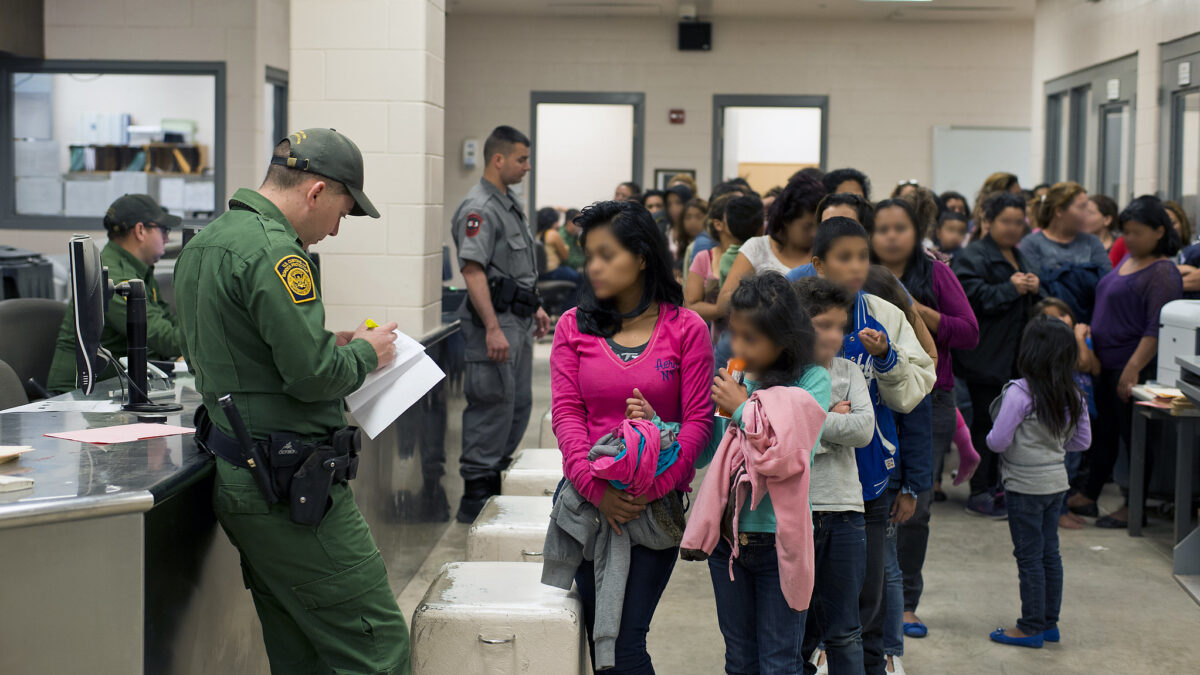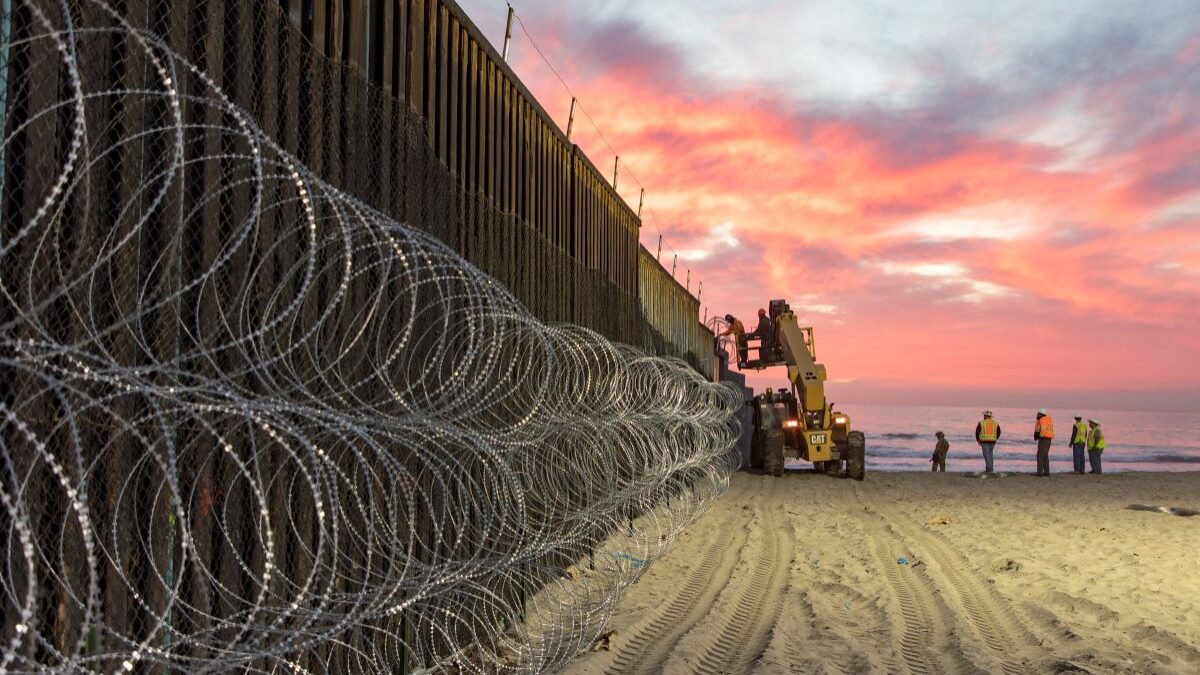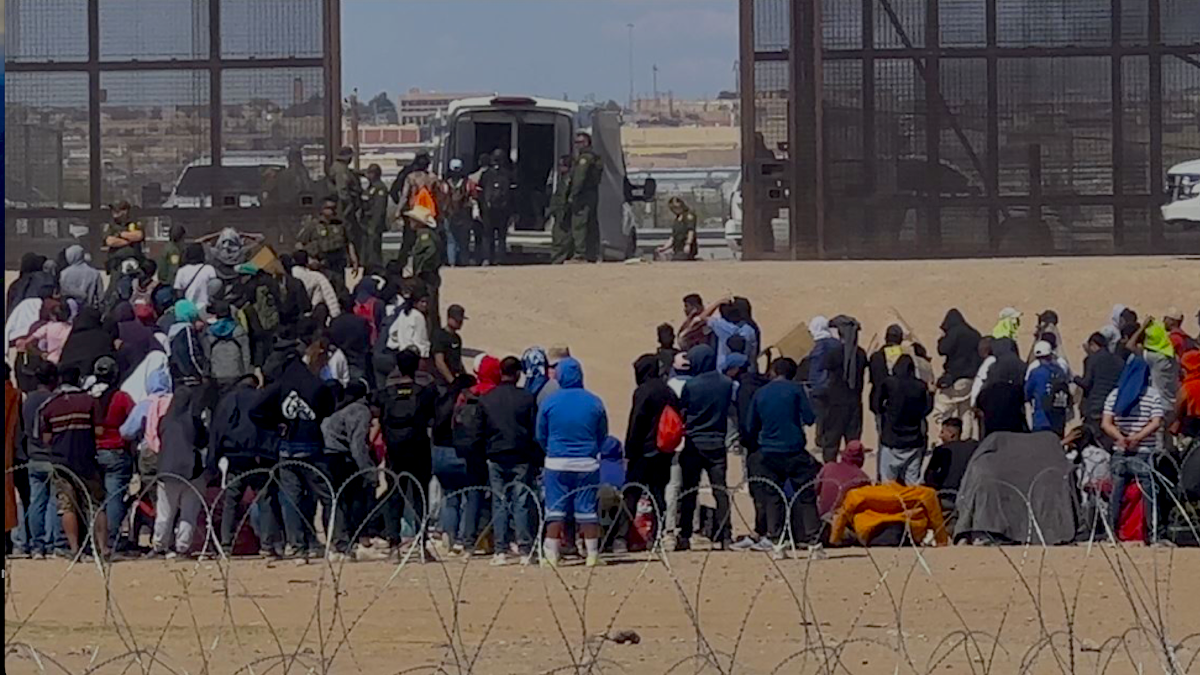Shortly after Donald Trump’s upset 2016 victory and January inauguration, official state of Texas business brought me to two ICE immigration detention centers in South Texas. It was part of my routine then to help the feds interview apprehended aliens from Pakistan, Syria, Somalia, and Afghanistan to collect intelligence about potential Islamic terrorism.
The South Texas Processing Center in Pearsall, Texas, some 100 miles from the Mexican border, was always filled to the brink with detainees. But to my surprise, for the first time, it was as empty as a football stadium in baseball season. So was ICE’s larger, ever-packed-to-capacity Port Isabel center near Brownsville, Texas.
“Where is everyone?” I asked the ICE intelligence officers separately at both facilities.
The same surprising answer went something like this: People throughout Latin America heard Trump’s campaign vows to crack down on illegal immigration and decided to stay home, the intelligence officers explained. Most of these people who did try were here, in their ICE detention cells, all the money in smuggling fees they’d spent to get over the border gone with nothing to show for it. The ones back in their home countries didn’t want to risk the money with Trump promising to deport them, so they stopped coming, they explained.
It was the first time I’d heard such a thing, although it seemed so obvious.
Before people gambled thousands of dollars in smuggling fees, they wanted reasonable assurance that the money would pay off with successful entries and long-term stays working and earning back many multiples of the investment.
If they thought the odds were too low of that happening, they stayed home.
That easy, uncomplicated calculus now had some evidence behind it. Huge, empty detention centers and short cafeteria lines in ICE detention facilities for me, and the intelligence officers put a fine point on it. But more importantly, immigrants they were catching and interviewing attested to it, the intelligence officers told me, and some of it was even in the media.
“Right now, nobody wants to go” to the United States, Honduran national Victoria Cordova told Reuters in March 2017 for a story about the effects of Trump’s border crackdown talk. “If in the future the situation looks better, well, I imagine then people will be more willing to travel.”
Of course!
The Trump Effect
Some media outlets heard about empty detention centers and low apprehension numbers and called it “the Trump Effect.” Much later, scores of immigrants would confirm the same calculus to me in interviews. It was all about whether the smuggling money was going to pay off in a kind of gamble. Those contemplating laying that cash on the felt table felt incentivized to start watching the news and listening to relatives and friends who were already in the United States and also watching the news.
Both in Latin America and in the United States, audiences were tuned in to everything Trump and Hillary Clinton were saying during his campaign, thanks to Spanish-language media. Relatives in the United States would immerse themselves and tell relatives back home if now was a good time to stay or come.
In mid-2015, Spanish-language news programs that served Latin American and U.S. audiences focused intently on Trump’s immigration ideas, drawing 80 percent of all mentions in Spanish-language outlets, The New York Times reported. Telemundo anchor José Díaz-Balart said his viewership had delved deeply into the specifics of Trump’s plans with a sense of “urgency.”
“Our audience is very well versed, very knowledgeable, very well educated on the issue of immigration,” Díaz-Balart told the paper. Viewers were eager to hear what Trump was “realistically proposing and planning to do on the issues that are so important to the community.”
CNN International’s CNN en Español, reaching 40 million households in Latin America and 22 million more in the United States, made sure they re-served every morsel of what Trump dished.
A July 2016 story by The Atlantic, marveling at the intensity of Spanish-language media coverage, wondered almost hopefully whether Univision might single-handedly tip the election to Clinton.
Remember that, in the run-up to the 2016 election, pollsters were all predicting a Clinton win. With her, the odds were looking great for the gambling smuggling money on a border jump. Clinton’s rhetoric and promises were the opposite of everything Trump promised.
“Stop the raids, stop the round-ups, stop the deporting of people who are living here doing their lives, doing their jobs, and that’s my priority,” Clinton said during a March 2016 televised debate, appealing to an ascendant leftist wing of the party.
Immigrants thinking about jumping the border perceived high odds that their smuggling money would pay off and started voting with their feet. The apprehension norms from 2012 to mid-2016 averaged between 30,000 and 40,000 monthly. All of a sudden, in about the summer of 2016, the numbers more than doubled in anticipation of the Clinton victory, to 66,708 by the end of October, just ahead of the election. But as we now all know, Trump pulled off an upset victory.
The number of Border Patrol apprehensions dive-bombed from 63,361 that November to 23,555 by February 2017. By April 2017, they hit a rock-bottom of 15,766 — one of the lowest numbers in decades.
In 2021, a National Bureau of Economic Research study concluded that Trump’s rhetoric and policies “led to a dramatic … reduction in illegal immigration of Central Americans to the United States” for at least seven months before ticking back up to preelection norms. Researchers Mark Hoekstra and Sandra Orozco-Aleman tapped one of my own favorite datasets to make the discovery: real migrants intending to cross the border. The researchers used the Mexican government’s regular “Surveys of Migration across Mexican Borders,” which are randomized interviews by government workers of first-time intending border crossers, as well as those recently deported by the Americans.
“We would argue this was one of the more important changes in the U.S. immigration policy space in recent years,” they wrote of their confirming discovery that the political communication of American politicians influences immigrant decisions. Hoekstra and Orozco-Aleman reported that Trump’s rhetoric dampened reentry plans among the deported. These “fell dramatically” by 10 to 15 percent for many months after the election as compared to the increasing levels before the election.
My 2017 Trump Effect lesson felt a bit revelatory at that time, but later it became a predominant staple in my understanding of immigration dynamics as I started teasing immigrants in long, in-depth interviews with the details of their internal decision-making processes. American policy pronouncements, political communication, and follow-through action on the ground were usually all that ever mattered to them (although court decisions can matter just as much) as they contemplated whether smuggling investments would get them in to earn money for a long time.
Take the story of a 28-year-old Haitian name Alexandre, whom I met and interviewed at great length in downtown Tapachula one night in January 2022. He and his wife left Haiti in 2016 for a presumed Hillary Clinton border but woke up to the rude discovery that Trump had won instead.
They and hundreds of thousands of other Haitians began pooling up in Chile or Brazil to wait out the tough Trump environment. Why? Because Trump quickly instituted a plan-ruining program called “metering,” which required intending border jumpers who planned to exploit a fake asylum claim to wait in Mexico until the Americans called a few at a time over for processing, a predecessor to the later “Remain in Mexico” policy that denied claimants the highly craved immediate entry.
Haitians were getting stuck in Mexico with nothing to show for the cash fortunes they spent on smugglers.
“Under President Trump, his policy was to make us stay outside the country and seek asylum from there. That was bad,” Alexandre explained.
I asked Alexandre if he and his wife decided to wait in Chile rather than gamble their $7,000 that they’d get over the new Trump border and not end up stuck in Mexico. “Si, si, si, si, si!” he answered in the Spanish he’d learned during his Chile years. “That money, in order to come to the United States … I worked hard for that money. I wouldn’t have spent that money when Trump was president.”
After Biden defeated Trump, though, they noticed Biden was admitting all Haitians if they came with a child. Alexandre and his wife had one. So they did what tens of thousands of other Haitians did after Trump’s election. “We talked it over with the family, and we decided to make the trip. Under this president, it seemed like things are different.”
In November 2021, he gambled the money when he saw others getting in ahead of him and confirmed that his odds of winning could not possibly be greater.
The Biden Effect
That a presidential candidate on the stump and in office could affect the internal calculation of odds among immigrants thousands of miles away may seem like rudimentary conventional wisdom to any thinking person, perhaps too obvious to even mention in a book. But the lesson of the Trump Effect on immigrant decisions clearly never took hold. During the 2020 campaign, lots of Democratic Party talk about opening the border soon enough produced the same increased anticipatory traffic toward the border as had Clinton’s open-doors talk four years earlier.
With the nomination in hand, what were Biden and Harris saying to the same global audiences that had been listening to them and Trump? All the things that would increase the odds that a smuggling fee gamble would pay off.
After the election, for example, the president-elect signaled that his administration would never return an unaccompanied child migrant who “ends up” at the border (as though by no one’s illicit doing) to Mexico to “starve to death.” Candidate Biden said he would work with faith-based groups to move them to safe locations “as quickly as possible.”
Before long, it produced what I called at the time a “Biden Effect” of a massive onslaught at the border. This was the equal and opposite of the Trump Effect’s empty ICE detention centers.
To this day, even the most obvious truisms about what really causes or ends mass migrations elude Democratic precincts and influential quarters of the American political, media, and public policy establishments. Nobody seems to get that this basic immigrant calculus matters so much. And so the mistake is repeated continuously.
Heads of families who earned, begged, or borrowed $10,000 in smuggling fees only to end up blocked at the border drive “don’t go” choices for others down trail. Even if entry is successful, high odds of deportation afterward still devastate the smuggling money piggy bank and lead to “no-go” decisions.
Aspiring border jumpers need to feel confident of both outcomes, that the fortune they’ve risked paying smugglers buys both a successful entry and a long stay inside working and earning many times more than their smuggling fee investment. Flows retreat when intending border-crossers perceive an elevated risk that they would end up back at the starting line, having lost the smuggling kitty and in debt, possibly to unsavory lenders.
My analysis of monthly and annual U.S. Border Patrol apprehension data and interviews with the migrants planning border jumps corresponds tightly with what American leaders say out loud, and then only if they follow through. Telegraphed intentions and political communication followed by concrete action launch the thousand ships or return them to port.









